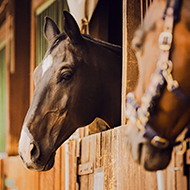Ragwort Poisoning Awareness
The Sanctuary recommends that from early spring onwards, donkey and horse owners should be regularly checking their animal’s grazing areas and hay for ragwort at its rosette stage.
Ragwort can be recognised at its rosette stage by the clusters of leaves that are ragged and usually deep green on top and with a cottony down underneath whilst the lower parts of the plant may have a purplish/red colour. Bright yellow, daisy-like flowering occurs from May to late October.
The Donkey Sanctuary has these tips for controlling ragwort infestations:
Always wear gloves when handling ragwort.
Pulling needs to be done before flowering has completed.
Ragwort is more easily removed when the plant is immature or after heavy rainfall when the ground is soft.
Measures need to be taken for at least 2 years as ragwort is a biennial weed. Areas that have previously been heavily infested should be controlled yearly due to remaining seeds in the soil.
Remove as much of the root as possible as ragwort can re-generate from root fragments. Pouring rock salt into the hole after digging helps to kill the remaining roots.
Any pulled ragwort plants should be burnt to prevent further seeding.
Weedkillers and herbicides are available but it is important to remember that a single application will not eliminate an infestation due to overlapping generations of the weed.



 Zoetis has launched a new survey to identify management techniques for Equine Herpes Virus (EHV).
Zoetis has launched a new survey to identify management techniques for Equine Herpes Virus (EHV).